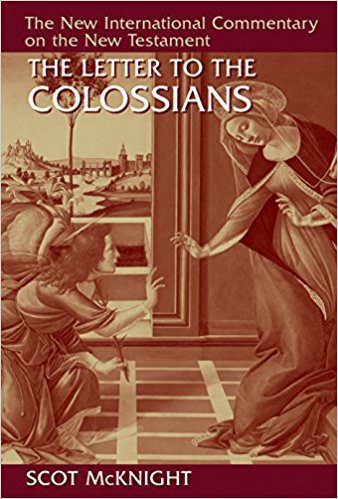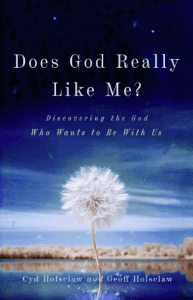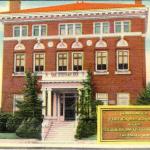 What’s this Saturday without Sister Jean?
What’s this Saturday without Sister Jean?
SAN ANTONIO — Sister Jean has stirred up some controversy.
Loyola’s 98-year-old chaplain, who has become the unquestioned star of the NCAA tournament, was asked during her media availability Friday — yes, she had a media availability — if God was a basketball fan. He is, she said.
And he likes the NCAA better than the NBA.
“I’ll wager that your viewer audience is very large this time and that if you compare it to the NBA when they’re playing, it’ll be different,” Sister Jean Dolores-Schmidt said. “I say that because these young players are playing with their hearts and not for any financial assistance.”
No surprise, that didn’t sit well with NBA fans on social media. But when you have lived and worked in a college setting for almost your entire adult life, did anyone really expect a different answer from Sister Jean?
Besides, no one is ever going to win a fight with a 98-year-old win. Except maybe Jalen Rose’s 100-year-old grandma.
Chicago vs. Houston, no contest!
The Windy City and the Bayou City are fighting.
Depending on your perspective, it’s over something very big or something very small – two beans.
Though Chicago and Houston have been longtime rivals, Houston’s installment of an enormous silver art piece on Monday got people in both cities all fired up. Just wait for the plot twist.
Chi-town lovers say their problem is that the Houston Anish Kapoor sculpture, lowered by a crane and installed outside the city’s new Glassell School of Art building, is just too similar to the “Bean” in Chicago’s Millennium Park. Their bean.
Chicago’s “Cloud Gate,” by the same artist, has become an iconic tourist destination – one of those places that makes selfie-enthusiasts’ dreams come true.
On the other side, Houstonians argue that even if their new piece, which looks more like a vertical liquid vitamin, is similar to the Chicago kidney-bean shaped icon that lays on its side, Houston is just a better city anyway.
The fight has escalated, as most high-profile fights do these days, on social media, with residents in both cities tweeting daggers at each other. …
Janssen didn’t concede the Houston bean’s superiority on this point. In fact, he just dug in more.
“It’s a leftover bean, a second-rate bean that’s been lying around in storage for the better part of 20 years, because nobody else wanted it,” he wrote to Gray. “Nobody except Houston wants a leftover, second-rate bean.”
In the end, it may just be a matter of where you’ve bean and where you’re going.
For anyone familiar with the story of the Exodus, it’s rather disappointing to learn of the near consensus among scholars that there is no evidence of an Israelite presence in ancient Egypt. This means there was no 400 years of slavery, no Passover, and no exodus to the Promised Land. There wasn’t even a Moses. In other words, the foundational narrative of Judaism is bunk. That’s why it’s big news that biblical scholar Israel Knohl thinks he can prove otherwise.
Knohl, who is a professor at the Hebrew University of Jerusalem, made his career with his book The Sanctuary of Silence (1992) and its theory of the “Holiness School,” the group who wrote the Holiness Code found in chapters 17-26 of the Book of Leviticus. In his new book How the Bible Was Born, recently published in Hebrew by the Israeli publishing house Kinneret, he proposes a theory anchoring the exodus story in historical fact. That is, Knohl has found evidence supporting the idea that Moses actually existed, and that the exodus was real — though not as we know it.
Knohl’s theory is based on Egyptian documents from the period, “historical hints” in the Bible, and the writings of Mantheo, the 3rd century BCE Egyptian priest whose work we know from being quoted by the Jewish-Roman historian Flavius Josephus. I was fortunate to get a peek at an early translation (a section of which will be published in the Fall 2018 issue of Harvard Divinity Bulletin), and here’s what he’s put together:
Corinne Weeks dropped out of high school.
She’s 17.
And in a few weeks, she’s graduating college.
This Ohio native’s next chapter is even more surprising.
She now has to choose between nine Ph.D. programs for chemical engineering at elite universities, including Ivy Leagues.
Oh, and each of those schools offered her a full scholarship, plus a housing stipend — worth more than $2.3 million in total for four years.
Corinne attended Milford High School until her sophomore year at age 14. She had good friends and was playing on the water polo team, but her classes weren’t challenging enough.
So, she left Ohio and enrolled in the Program for the Exceptionally Gifted at Mary Baldwin University in Virginia.
“I felt like it was the place I was meant to be,” Corinne said. “I could start on my college degree right away and take all the classes I wanted to.”
She’ll be graduating in May with a 4.0 GPA after three years at the women’s college at MBU.
More: Need money for college? Here’s how to make a grab for $150,000 in scholarships.
More: Majority of parents saving for kid’s college have socked away less than $10,000
Stanford, Princeton, University of Texas and Cornell are on her list of suitors. Michigan State, Case Western Reserve, University of Virginia and University of Illinois are also in the running.
Many of those programs are among the top 10 chemical engineering programs in the country.
Fascinating article by Saul Cornell on the first public school shooting (of legal consequences) in the USA.
Though little remembered now, the first high-profile school shooting in the U.S. was more than 150 years ago, in Louisville, Kentucky. The 1853 murder of William Butler by Matthews F. Ward was a news sensation, prompting national outrage over the slave South’s libertarian gun rights vision and its deadly consequences. At a time when there wasn’t yet a national media, this case prompted a legal conversation that might be worth resurrecting today.
The deadly encounter between the two men was triggered by a trivial matter: eating a bunch of chestnuts during class. William Butler was a 28-year-old teacher, a Yankee immigrant to Kentucky who had helped found the Louisville School, an institution that attracted students from some of the best families in town. One of those was William Ward, the son of a prominent cotton merchant. Butler, a stern teacher, confronted the young Ward about eating in the classroom. Ward denied it. His teacher called him a liar and administered a whipping. This was a severe form of punishment, but not unusual in the mid-19th century, an age when corporal punishment in schools was the norm in many places.
The punishment did not go over well in the Ward household. The next day the boy’s older brother, Matthews Ward, purchased two small pistols and returned to the school with William and another brother, Bob. Butler had no inkling that his actions had incensed the elder Ward brother, and he greeted all three brothers cordially. Matthews confronted the teacher, calling him a “damned scoundrel” and a “coward.” Matthews and William Butler scuffled, and in the course of the altercation, Ward pulled out his pistol and shot his opponent. The Ward boys fled the building; students rushed to Butler’s aid, carrying him to his house, where a doctor attended him. But to no avail. Butler died within days of the incident.
Ward was arrested and charged with murder. The trial was a news sensation, garnering headlines in papers across the nation. As today, the public was horrified at the thought of deadly violence in a school, a protected place of learning, and the very embodiment of civilization and order. And the idea of a student killing his brother’s teacher was almost an unthinkable violation of the social order….News of his exoneration prompted protests and denunciations across the United States. Condemnation of the verdict was especially severe outside of the South. Abolitionists in particular were outraged by the trial’s outcome, and used it to underscore their belief that the inherently violent nature of the slaveholding South meant that its laws were dominated by “the pistol and the lash.” As one newspaper wrote, “An Act that would have hung him in Massachusetts, is justified in Kentucky.”
One of the most interesting features of the response to the Ward verdict—and one worth remembering for gun-control advocates today—was the way critics attacked Kentucky’s broad interpretation of the right to bear arms in self-defense. Legal critics of the trial argued that Kentucky law had veered too far from mainstream American constitutional thought, which had always balanced the right of self-defense against other rights, such as the right to enjoy peace. According to this way of thinking, Ward’s actions were not a vindication of American ideas of liberty, but a distortion of them, encouraging anarchy rather than true liberty.
Although advocates for the modern gun rights movement claim to be champions of the Founders’ vision of the Constitution, they have actually taken their cues from this later, libertarian vision of gun rights—one that was developed by slave-owning judges in antebellum America. In fact, the majority opinion written by Justice Antonin Scalia in the landmark U.S. Supreme Court case District of Columbia v. Heller—the 2008 case that struck down the District of Columbia’s gun-control law and established an individual right to bear arms unconnected to the militia for the first time under federal law—approvingly cited these Southern precedents as the foundation for his reading of the Second Amendment.
The Ward shooting, and the popular outcry it generated, reminds us that there’s another possible way to view the hierarchy of American rights—one in which the right not to get shot is on par with, and may even outweigh, the right to freely carry a gun and use it. The notion that the Second Amendment overrides these rights and prohibits sensible gun laws has never been the dominant position in American law. Most Americans in the 18th century and many in the 19th recognized this basic fact as fundamental to our Constitutional tradition. It is surely time to restore those other esteemed American rights to their rightful place in our contemporary constitutional debates over the role of guns in America. [HT: JS]
Great article on Madelein l’Engle’s feminism by Lisa Weaver Swartz.
Madeline L’Engle’s A Wrinkle in Time was first published in 1962. This date, of course, placed it amidst fears of communism in the Cold War era. But its publication also coincides with another historical turning point. Just months after its release, Betty Friedan’s The Feminine Mystique also hit the shelves. In fact, L’Engle and Friedan shared more than publication dates. The two women were also classmates at Smith College where they worked together on a campus publication called Smith College Monthly.
Both emerged from comfortable 1950s suburbia as educated, ambitious women in a world not built for their success. Friedan took on this world with an activist posture, boldly critiquing patriarchal social arrangements. Her work, of course, helped spark the second-wave feminist movement.
L’Engle took a subtler feminist path. Her literary career produced not only A Wrinkle in Time, but also a delightful array of both fiction and nonfiction. The undercurrent of her work was not liberal feminism but L’Engle’s Christian faith. [HT: JS]
Knoxville Tennessee finally coming of age:
KNOXVILLE, Tenn. — Knoxville, Tenn., Mayor Madeline Rogero recently made an inquiry about an existing ordinance on rooftop bars that led to the discovery of a decades-old ordinance prohibiting — wait for it — drinking and dancing.
Rogero’s communications director, Jesse Mayshark, informed the mayor and her response was: “Wait, we have what?”
City Council acted quickly Tuesday night to abolish the decades-old ordinance on second reading and Mayshark posted the yarn on Facebook, and has received hundreds of likes and comments.
When asked about the change, Rogero laughed and said she probably violated the law at some point because she didn’t know about it.
“It’s been our goal to do away with unnecessary laws on the books as we find them,” she said. “Here was one that didn’t make sense anymore. As someone who likes to dance and have an occasional drink it seemed appropriate that we face the century we’re living in.”











